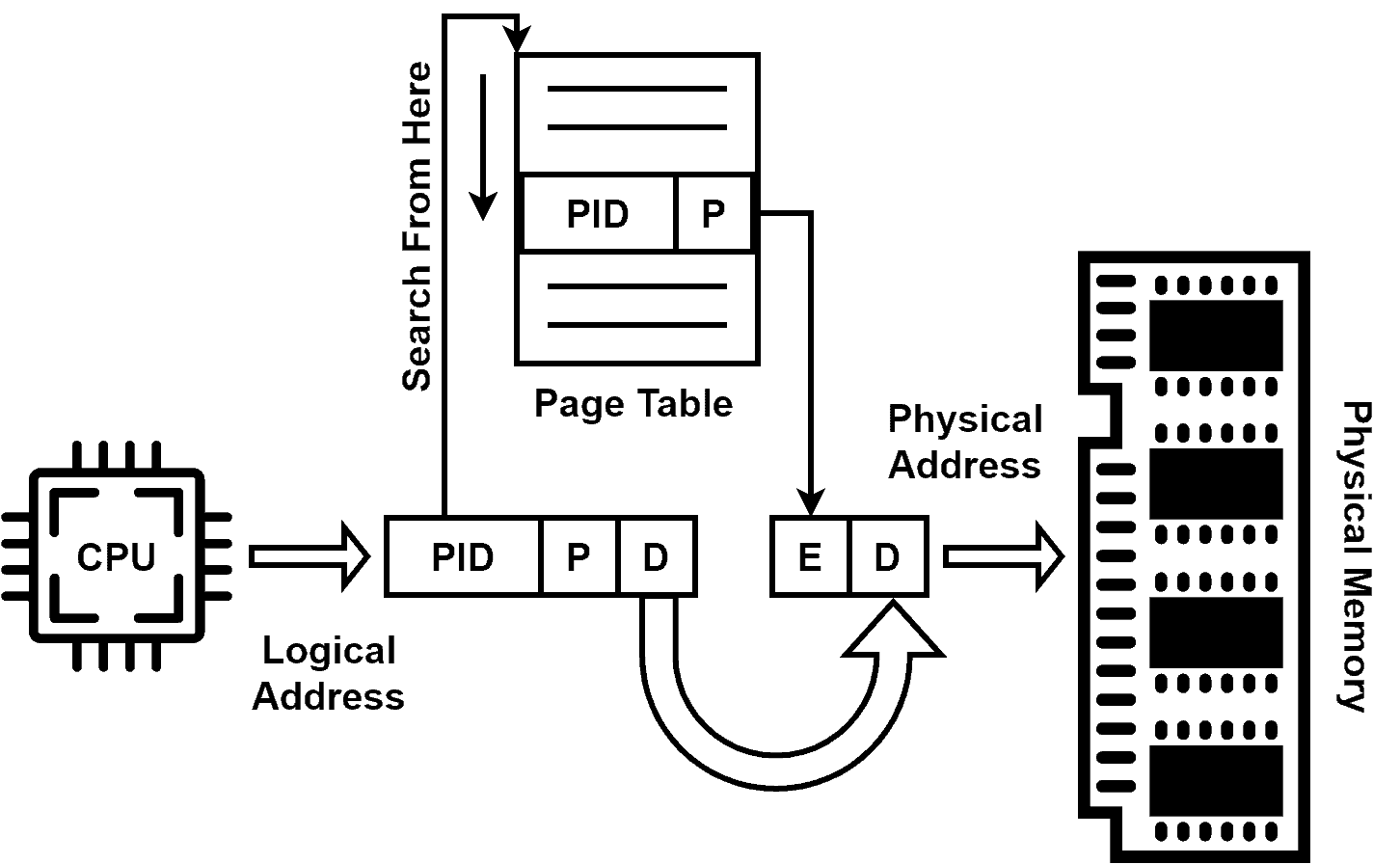1. 概述
在本篇文章中,我们将探讨操作系统中的一种内存管理技术:倒排分页(Inverted Paging)。
我们会讲解它的运作机制,并分析其优缺点。该技术在特定场景下对性能优化有重要作用,尤其适用于物理地址难以直接映射的系统。
2. 倒排分页简介
倒排分页是一种内存管理机制,它使用辅助存储(Secondary Storage)作为虚拟内存的后备存储。✅
与传统分页机制不同的是,它不是为每个进程维护一个页表,而是统一维护一个全局页表,用于将虚拟地址映射到物理地址。
它的核心思想是:将虚拟地址到物理地址的映射关系反过来存储,即每个物理页帧在页表中有一个条目,记录它当前被哪个进程的哪个虚拟页所使用。
这种机制特别适用于虚拟地址空间远大于物理内存的系统。当程序访问的虚拟页不在物理内存中时,操作系统会通过页表查找该页在辅助存储中的位置,然后将其加载到内存中。
3. 工作流程详解
倒排分页的核心在于使用一个全局的“倒排页表”来管理虚拟地址到物理地址的映射。
与传统分页相比,传统方式中每个进程都有自己的页表,而倒排分页只维护一个系统级的页表,每个条目对应一个物理页帧。
3.1 数据结构
倒排分页通常包含两个主要结构:
- 页表(Page Table):记录每个物理页帧对应的虚拟页信息(如进程ID和虚拟页号)。
- 倒排页表(Inverted Page Table):系统全局唯一的页表,用于快速查找虚拟地址对应的物理地址。
3.2 地址转换过程
当程序访问一个虚拟地址时,系统会将该地址拆分为:
- 进程ID(PID)
- 虚拟页号(P)
- 偏移量(D)
然后,系统将 (PID, P) 作为查找键,在倒排页表中查找是否存在对应的物理页帧。如果找到匹配项(假设在表的第 E 项),则最终的物理地址为:
物理地址 = 物理页帧 E × 页大小 + D
如果找不到匹配项,则触发缺页中断(Page Fault),由操作系统从辅助存储中加载该页。
3.3 示例图解
下图展示了倒排页表的基本结构和查找流程:

在这个例子中,每个物理页帧对应一个倒排页表条目,记录了当前映射的进程和虚拟页号。
4. 优缺点分析
✅ 优点
- 减少分页操作:由于物理页可以被多个进程共享,减少了页面换入换出的频率。
- 加快上下文切换:进程切换时无需重新加载页表,提高效率。
- 减少磁盘I/O:某些页面可能已经在内存中,避免重复读写。
- 降低功耗:由于减少了I/O操作,整体功耗有所下降。
❌ 缺点
| 缺点 | 说明 |
|---|---|
| 内存占用高 | 倒排页表需要占用较多内存空间,尤其在物理内存较大的系统中。 |
| 查找效率低 | 每次地址转换都需要查找全局页表,效率低于传统方式。 |
| 页表膨胀 | 随着物理内存增加,倒排页表的大小也会线性增长。 |
| 实现复杂 | 相比传统分页机制,实现和维护难度更高。 |
⚠️ 特别注意:倒排分页虽然在某些场景下能提升性能,但其实现复杂度和资源消耗较高,通常只在嵌入式或特定高性能计算系统中使用。
5. 总结
本文介绍了操作系统中的一种内存管理技术 —— 倒排分页(Inverted Paging)。
我们分析了其工作原理,包括地址转换流程和核心数据结构,并通过优缺点对比,帮助你判断其适用场景。
虽然倒排分页在现代通用操作系统中使用较少,但在一些物理内存受限或需要快速上下文切换的系统中,它仍然具有一定的实用价值。对于系统架构师或底层开发人员来说,了解其原理是非常有必要的。